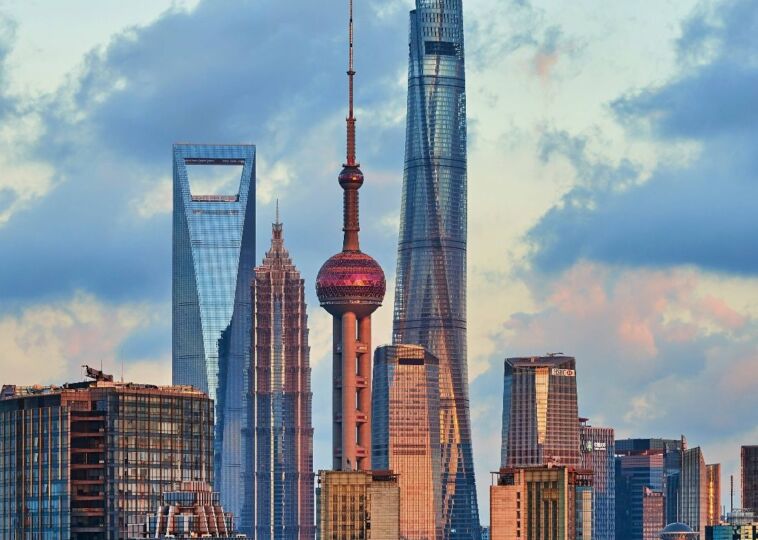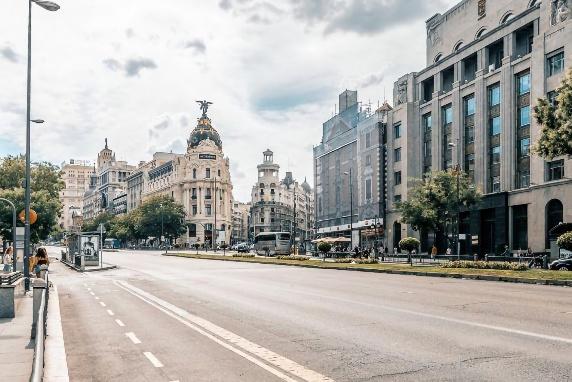Discover the World’s 7 Most Breathtaking Skylines

Contents [hide]
It’s this perfect contrast that makes a skyline genuinely unforgettable. Take a moment to think about what makes a skyline stand out. Is it the sheer height of the buildings? Or maybe it’s the way the skyline interacts with its environment? In many cases, it’s all of the above.
These towering marvels are about height and creating a statement, a city’s calling card to the world.
Sydney Harbour, Sydney

Sydney Harbour isn’t just a skyline; it’s a symphony of architecture and nature in perfect harmony. As the capital of New South Wales, Sydney effortlessly marries forward-thinking urban design with the breathtaking beauty of its natural surroundings. When you think of iconic skylines, Sydney Harbour’s panorama is impossible to overlook; it’s a visual feast where modernity meets timeless elegance.
What sets Sydney Harbour apart as one of the world’s most stunning skylines is its unique blend of architectural elements, each telling its own story while contributing to a cohesive whole. Let’s start with the Sydney Opera House, arguably the most recognizable building in Australia.
This juxtaposition of the old and the new is a theme throughout the Sydney skyline. Just behind the Opera House, the Central Business District, CBD, rises with its cluster of modern towers.
These sleek skyscrapers represent Sydney’s status as a global financial hub, but they also serve as a striking backdrop to the more playful forms of the Opera House. Among them stands the Sydney Tower Eye, nearly 1,000 feet tall and topped with a viewing platform that offers panoramic views of the entire city.
Central, Hong Kong

Hong Kong’s skyline is more than just a collection of tall buildings; it’s a testament to the city’s innovative spirit and unique geographical challenges. With a population of over 7.5 million packed into just 50,000 acres, roughly a quarter the size of New York City, Hong Kong’s skyline is a towering forest of high-rises, each contributing to the city’s iconic silhouette.
What sets Hong Kong apart is not just the height of its buildings but the sheer density. Among these giants, four of the world’s 15 tallest buildings proudly stand, with the International Commerce Centre, ICC leading the pack.
This 108-story behemoth doesn’t just dominate the skyline; it also houses the Ritz-Carlton Hong Kong, where guests can gaze down from dizzying heights as container ships below glide into port, appearing as tiny as iron filings from above.
From this vantage point, you can watch the skyline come alive, its lights dancing across the water, creating a mesmerizing natural and artificial beauty blend. It’s a scene that perfectly captures the essence of Hong Kong, a city where innovation meets tradition and where the future is always within reach.
Manhattan, New York

Chances are, it’s that famous skyline, a towering grid of steel and glass, that has captured the imagination of millions worldwide. It’s not just a backdrop; it’s a symbol that’s been immortalized in countless films, TV shows, and postcards.
From the classic yellow cabs weaving through the streets below to the majestic spires piercing the sky above, Manhattan’s skyline is more than just a collection of buildings. It’s a testament to New York City’s enduring spirit. What makes Manhattan’s skyline so unique?
While the city’s architecture has evolved over the decades, the iconic stars of the 1930s still steal the show. Take the Empire State Building, for example. This art deco masterpiece wasn’t just the tallest building in the world when it was completed; it symbolized hope during the Great Depression.
Today, its towering presence continues to define the New York City skyline, offering visitors breathtaking views from its observation decks., Pro tip: For the best photos, head to the 86th floor; you’ll be snapping through the glass higher up. And then there’s the Chrysler Building, with its stainless steel crown glinting in the sun.
Corcovado Mountain, Rio De Janeiro

Rio de Janeiro isn’t just another city; it’s a vibrant canvas where urban life meets nature’s grandeur. But what sets this skyline apart isn’t just the cluster of high-rises or the architectural feats scattered throughout the city; it’s the iconic presence of Corcovado Mountain and its crowning glory, Christ the Redeemer.
From the modern, cutting-edge design of the Museum of Tomorrow, a Santiago Calatrava masterpiece, to the sprawling favelas climbing the hillsides, the city is a study in contrasts. Yet, amid all this architectural diversity, the simple yet profound silhouette of Christ the Redeemer genuinely captures the essence of Rio.
Perched atop Corcovado Mountain, Christ the Redeemer isn’t just a statue but a symbol defining the city. As the world’s most giant Art Deco sculpture and one of the New Seven Wonders, it rises majestically from the verdant South American jungle, its outstretched arms embracing the city and the 130 islands scattered across the bay.
Pudong, Shanghai

With its soaring skyscrapers and innovative architecture, Pudong’s skyline isn’t just about height; it’s about making a statement. At the heart of Pudong’s skyline is the Shanghai Tower, China’s tallest building and the world’s second-tallest. It’s not just a building; it’s a symbol of Shanghai’s rapid ascent on the global stage.
However, the Shanghai Tower is just one of many fascinating structures in Pudong. The Shanghai World Financial Center is tall beside it, affectionately known as the bottle opener due to its distinctive shape. Then there’s the Oriental Pearl Tower, its needle-like spire piercing the sky.
With its unique sphere-tipped design, this television tower is instantly recognizable and adds a dash of futuristic flair to the skyline. The Ritz-Carlton’s Flair bar, perched high in the IFC Building, is a prime spot to soak in the cityscape.
Downtown, Los Angeles

It’s a skyline that’s starred in countless movies, but it might seem a bit underwhelming when you take a closer look. The skyscrapers’ flat tops and uniform height aren’t the dramatic spires you’d expect from a major metropolis. But there’s a reason for this design choice, rooted in the city’s history and regulations.
Until 2014, Los Angeles had a law requiring all tall buildings to feature flat roofs to accommodate helicopter landing pads, a safety measure prioritizing practicality over aesthetics. This rule led to a skyline dominated by structures with what some might call uninspired buzzcuts.
It’s not the most glamorous comparison, but it does give the building a unique silhouette in a sea of flat tops. There are a couple of must-visit spots for those looking to experience this skyline at its best.
Perched high above the city, it offers a sweeping perspective of LA, allowing you to take in the full scope of the skyline against the mountains. It’s a view that’s both cinematic and awe-inspiring, perfectly encapsulating the city’s unique charm.
Downtown, Vancouver

Vancouver’s skyline is one of the world’s most striking, seamlessly blending urban sophistication with breathtaking natural beauty. Framed by the majestic North Shore Mountains, often dusted with snow, Vancouver’s skyline is a testament to thoughtful urban planning and architectural innovation. For starters, it boasts the highest number of residential high-rises per capita on the North American continent.
But these aren’t just high-rises; they’re part of a meticulously designed urban village that prioritizes light, space, and livability. The glassy towers that dominate the downtown area are not just buildings; they’re carefully positioned to enhance the city’s aesthetic and ensure a bright, airy atmosphere.
At the forefront of this skyline is the gleaming Shangri-La Hotel, a 62-story marvel that pierces the sky as the tallest structure in the city. Not far behind is the twisted form of the Trump International Hotel and Tower, a building that adds a touch of architectural flair with its unique design.
But it’s not all about the new and shiny; Vancouver’s skyline is also home to historical gems that add depth and character. When it was completed in 1930, it was the tallest skyscraper in the British Empire, and today, it remains a beloved landmark, a nod to the city’s rich architectural history.


